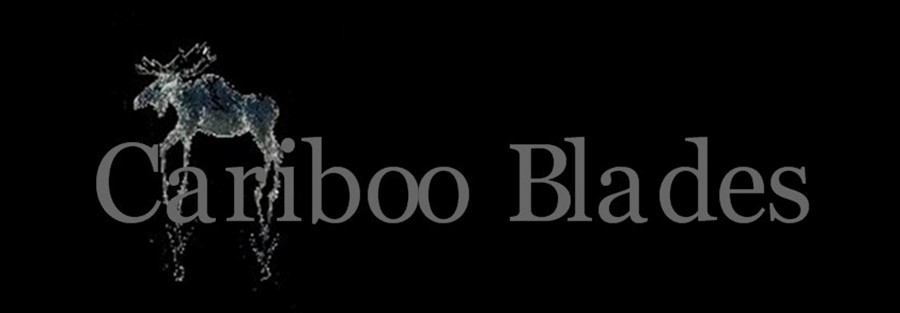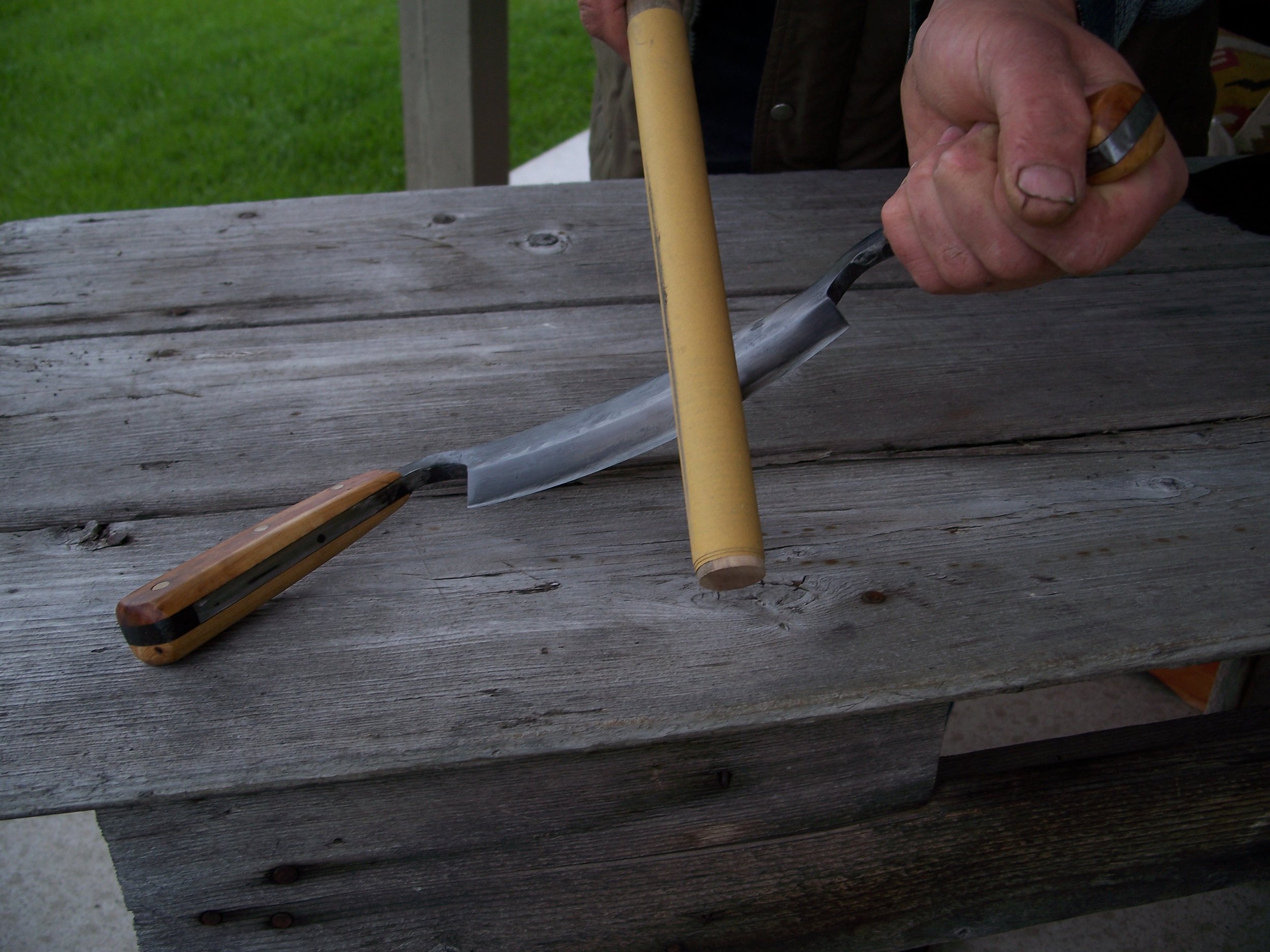Cariboo Blades Draw Knives Sharpening
Up-cycled high carbon steel from truck springs and big lumber mill head saw blade.
The steel is hand forged into heavy duty straight or curved draw knife blades with wide bevels and long handles from one piece of steel. Heavy duty 1/2 inch thick to 1/4 inch thick blades for peeling logs, shaping logs and timber, carving and building. From 4 inches to 10 inches of edge.
Hand forged draw knife.
6 inch slightly curved edge. 1/4 inch spine.
Step 1.
Perform this step first just to clear the bottom edge of the draw knife of any burr. Place the back of the blade flat on your stone. Slightly angle your stroke position.
Begin to draw towards yourself. Adjust the angle so that the edge just comes into contact with the stone.
Very lightly shave the stone
Full tang, Apple wood handles.
Curved blade saddling the log curve.
The angles of the blade, edge and handles are designed for efficiency.
Follow through as you are leaving the stone. Repeat this step coming down the stone with the blade at the angle that is mirror image to the one shown. Always count the strokes and apply the same number on both angles.
Step 2.
Most of the sharpening can be done with a 2.5 cm diameter, 30 cm long dowel (broomstick) wrapped tightly with a piece of 400 grit auto body sand paper and stapled 3 times. Have 3 or 4 sharpening dowels. 240, 400, 600, 800, 1200….The dowel sharpening sticks are great sharpening the hooks on crooked knives as well.
Stay at the same angle, 25 degrees, with each stroke pushing off. Follow through when you are leaving the edge.
Repeat step I to remove the burr.
If you are using the knife everyday keep your edge sharp. The edge will start rounding with the dowel sharpening stick eventually. A rounded edge won't be a big problem to bring back flat. A stone set in a vise once every week or two (if you work every day) just to keep the edge angle flat. Round or cone stones are great. On some woodworking hand tools like the draw knife, carver’s slick or adze, a slightly rounded edge is preferred by some to keep the knife edge from sticking in wood.
Step 3.
Glue a piece of 8oz leather to a board, rub some compound into the leather. Strop the blade in reverse so you don’t cut the leather. Keep pressure on the blade and draw the blade flat. It’s important to keep the back flat on the strop so the back stays flat.
A piece of 6 or 8 oz leather wrapped tightly on a piece of dowel and glued with contact cement. Rub in some honing compound and push the dowel down the knife's edge and off. Follow through and follow the main bevel, not the secondary bevel.






